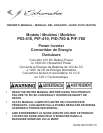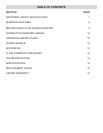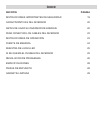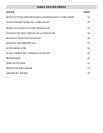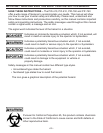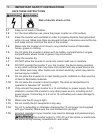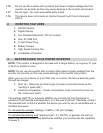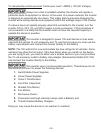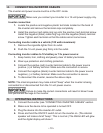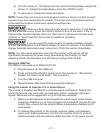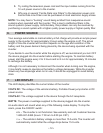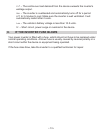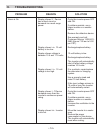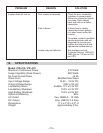
• 8 •
Do not use the inverter with a product that draws a higher wattage than the 1.16
inverter can provide, as this may cause damage to the inverter and product.
Do not open – No user serviceable parts inside.1.17
This device does not include an internal Ground Fault Circuit Interrupter 1.18
(GFCI).
INVERTER FEATURES2.
ON/OFF Button1.
Digital Display2.
Two3. Standard Electrical 110V AC Outlets
One, 5V USB Port4.
12-Volt Power Plug5.
Battery Clamps6.
High-Speed Cooling Fan7.
Low-Battery Protection8.
BEFORE USING YOUR POWER INVERTER3.
NOTE: This inverter is designed to be used with a single battery, up to group 31 type
(130 Ah or smaller in size).
NOTE: Do not use the inverter with a product that draws a higher wattage than the
inverter can provide, as this may cause damage to the inverter and product.
When you turn on a device or a tool that runs on a motor, the device basically goes
through two stages:
Start Up – Requiring an initial surge of power (commonly known as the 1.
“starting or peak load”).
Continuous Operation – Power consumption drops (commonly known as 2.
the “continuous load”).
The wattage (WATTS) or amperes (AMPS) can normally be found stamped or
printed on most devices and equipment, or in the user’s manual. Otherwise, contact
the manufacturer to nd out whether the device you want to use is compatible with a
modied sine wave.
To calculate the wattage: Wattage = AMPS x 120 (AC Voltage).
To calculate the starting load: Starting Load = 2 x WATTS. In general, the start up
load of the device or power tool determines whether your inverter has the capability
to power it.



